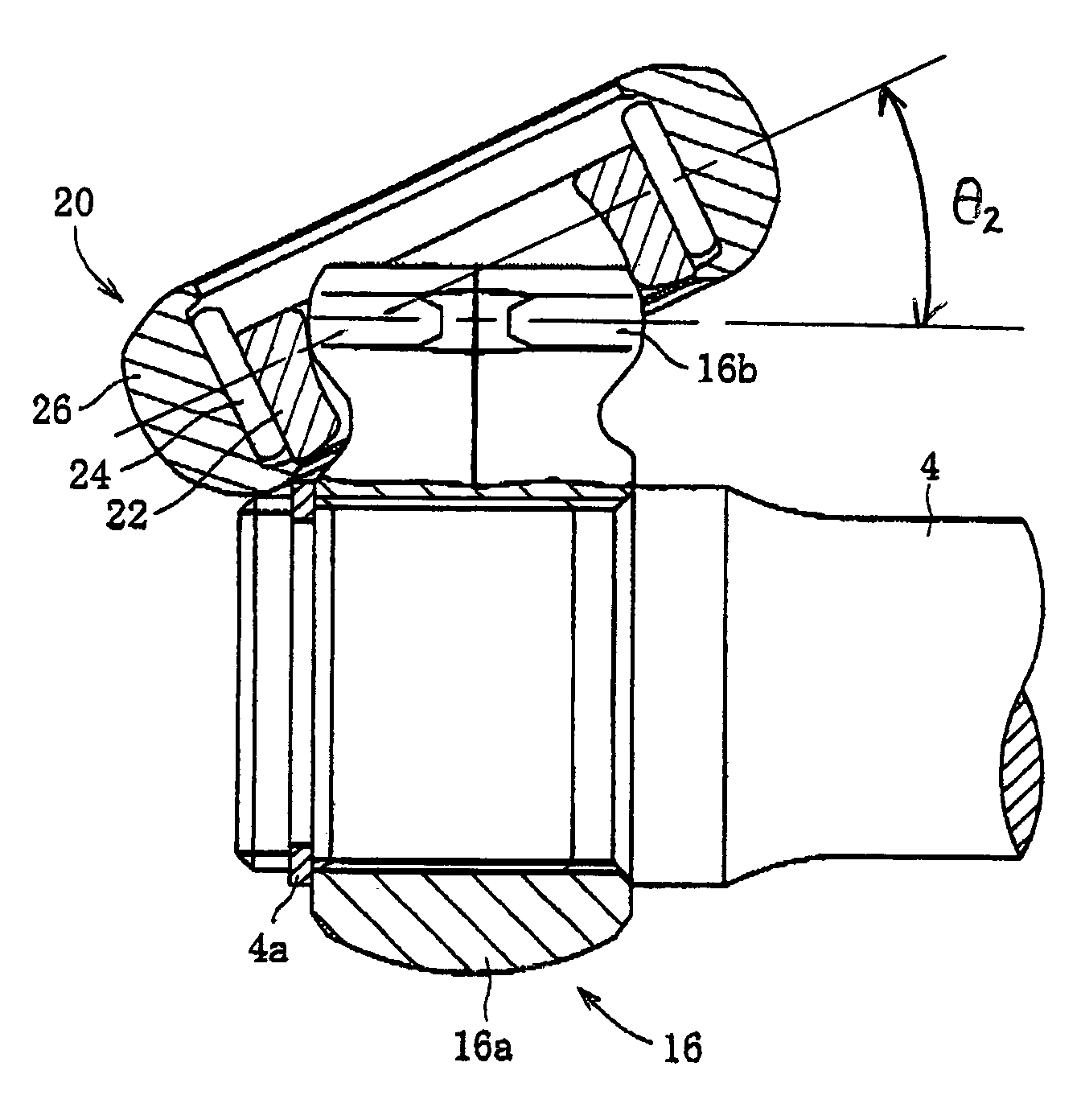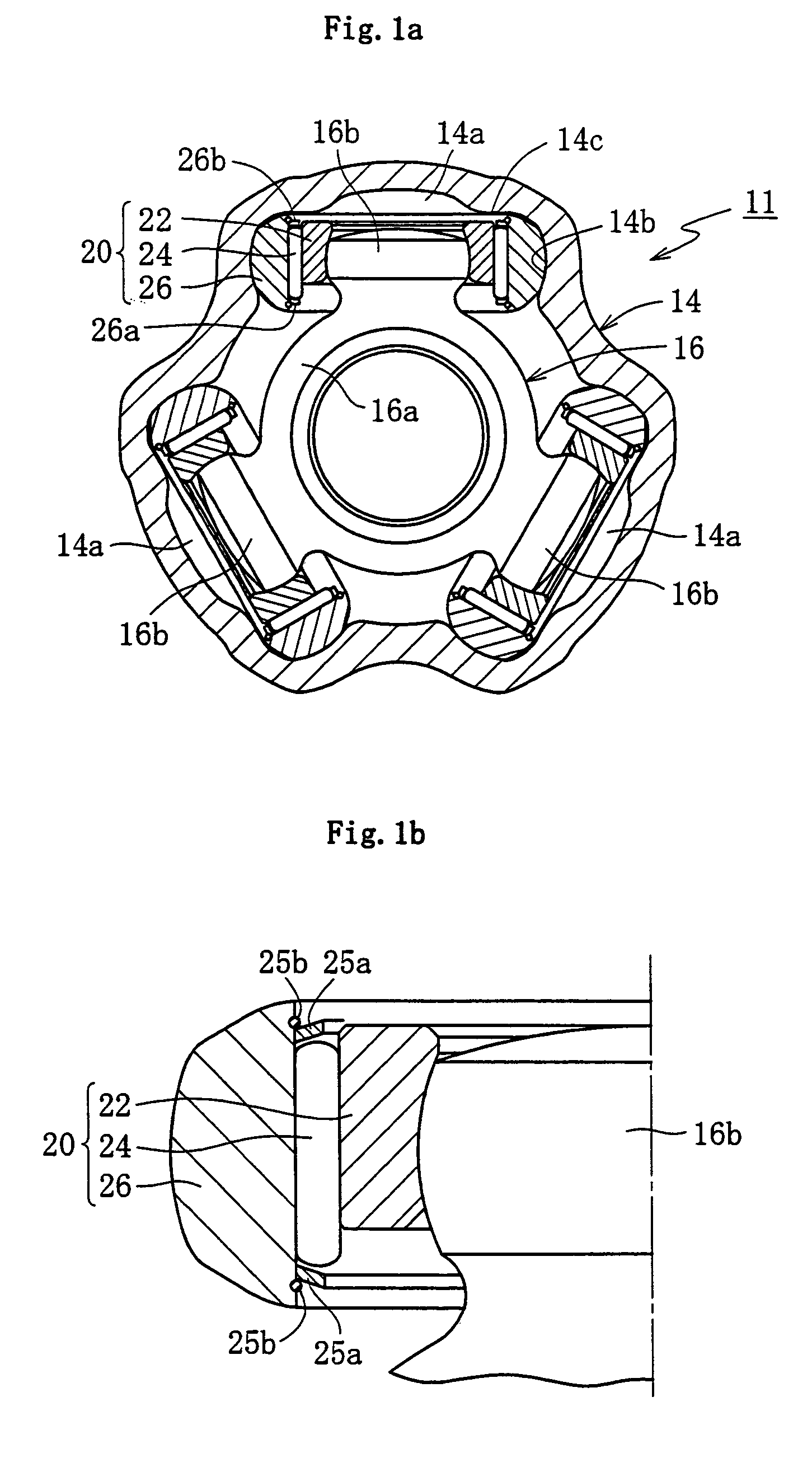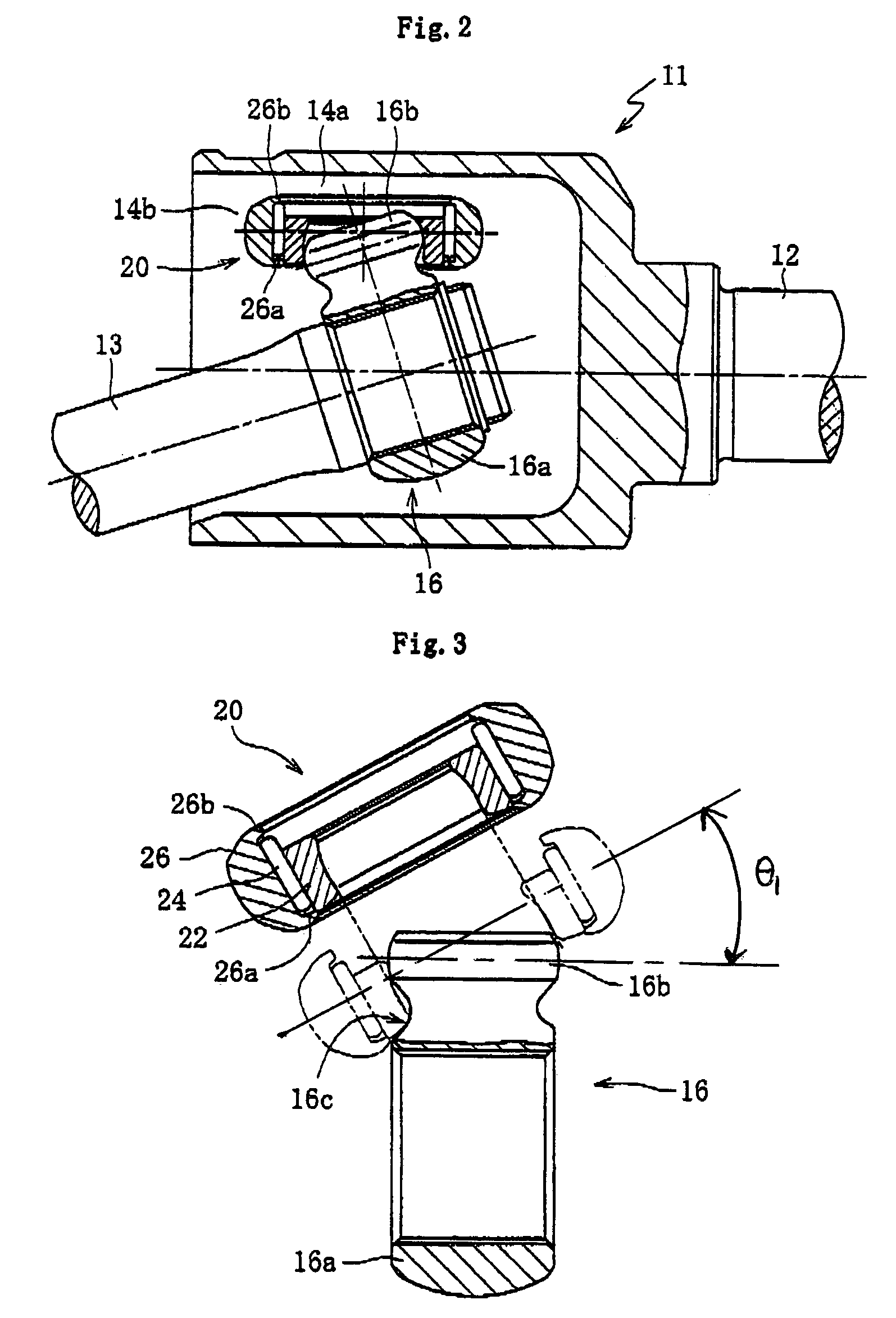Tripod type constant velocity joint
- Summary
- Abstract
- Description
- Claims
- Application Information
AI Technical Summary
Benefits of technology
Problems solved by technology
Method used
Image
Examples
Embodiment Construction
[0038]An embodiment of the invention will now be described with reference to the drawings.
[0039]First, referring to FIGS. 1a, 1b and 2, a tripod type constant velocity joint 11 is no different from the one shown in FIGS. 15 and 16 described previously, as far as the basic arrangement is concerned, comprising a hollow cylindrical housing 14 fixed to the end of a first rotary shaft 12, such as a driving shaft, and a tripod 16 fixed to the end of a second rotary shaft 13, such as the rotary shaft on the wheel side.
[0040]The housing 14, herein, is formed integrally with the first rotary shaft 12, and has axially extending recessed grooves 14a at circumferentially trisectional positions on the inner peripheral surface. Each recessed groove 14a is recessed to extend radially outward from the inner peripheral surface of the housing 14, and is composed of a pair of circumferentially opposed guide surfaces 14b and a bottom surface positioned on the radially outside of the housing and connect...
PUM
 Login to View More
Login to View More Abstract
Description
Claims
Application Information
 Login to View More
Login to View More - R&D
- Intellectual Property
- Life Sciences
- Materials
- Tech Scout
- Unparalleled Data Quality
- Higher Quality Content
- 60% Fewer Hallucinations
Browse by: Latest US Patents, China's latest patents, Technical Efficacy Thesaurus, Application Domain, Technology Topic, Popular Technical Reports.
© 2025 PatSnap. All rights reserved.Legal|Privacy policy|Modern Slavery Act Transparency Statement|Sitemap|About US| Contact US: help@patsnap.com



